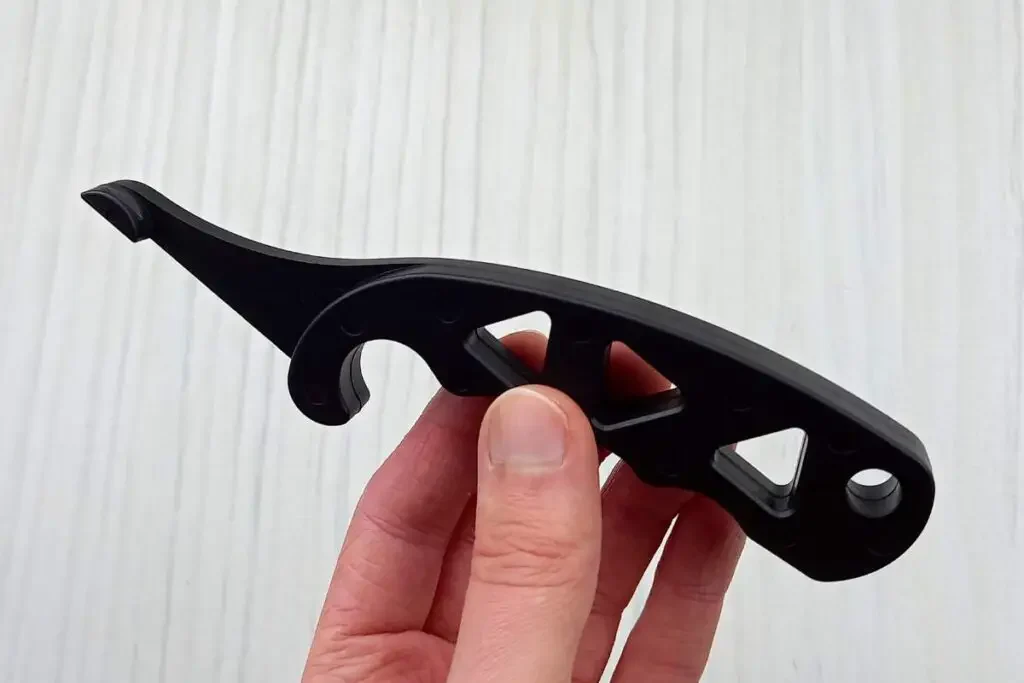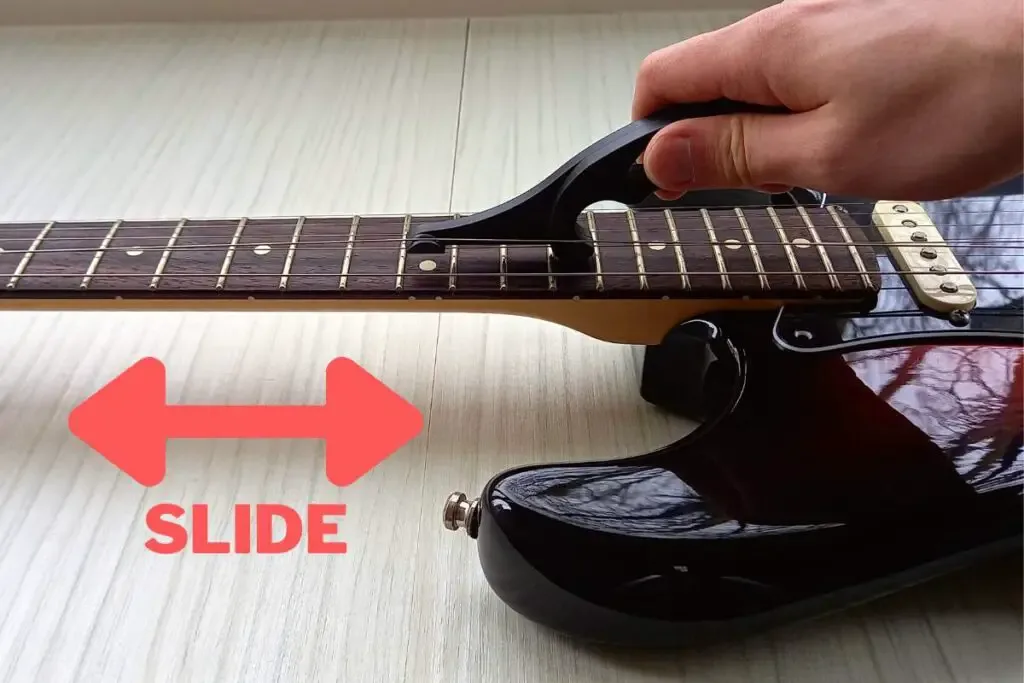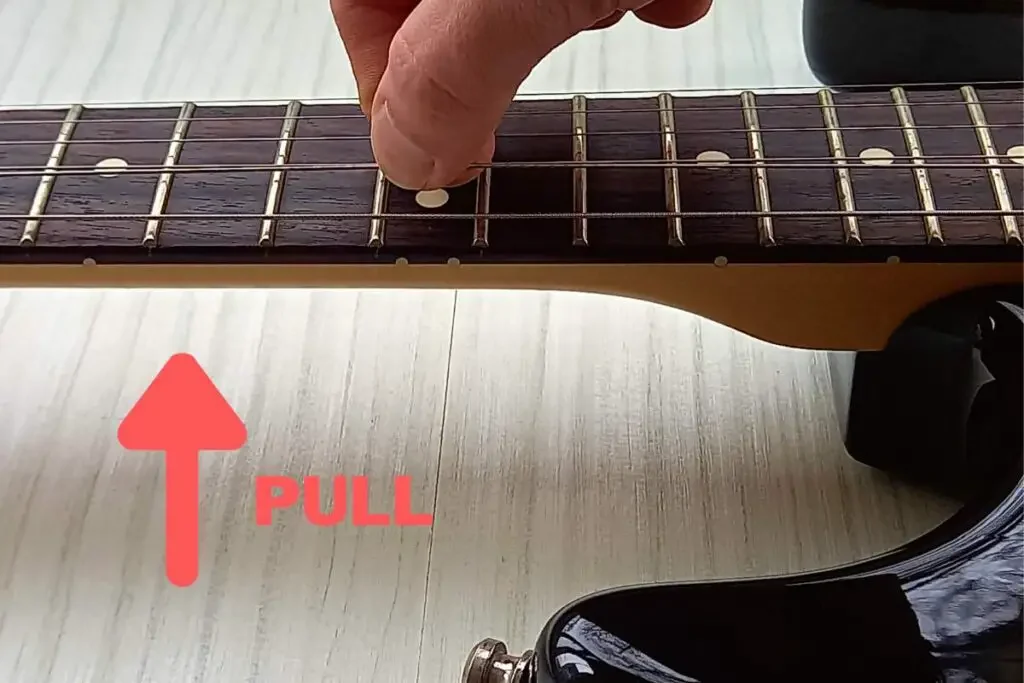Ever noticed that when you restring your guitar, it constantly slips out of tune for the first hour or so? What if I told you that you can skip this and get straight to playing by stretching your strings.
Before I learned how to stretch my guitar strings, I’d just put up with the inconvenience of waiting for them to naturally settle. I’d tune up, play a few notes, retune, and repeat… on and on. Since then, stretching my guitar strings has become an essential part of my string changing process.
If you need to get straight to playing – like if you’ve broken a string at a gig – then you can’t afford to sit around and wait.
In this guide I’ll teach you how to stretch your guitar strings. It’s really simple and only takes five minutes.
But, keep in mind that you only need to stretch a new set of strings. If your guitar strings are old, they’ve already naturally been stretched over time.
Affiliate disclaimer: This page contains affiliate links for products that I’ve tried and tested. As an Amazon Associate I earn from qualifying purchases at no additional cost to you. Learn more here.
What does stretching your guitar strings do?
Your guitar strings are under constant tension from the tuning pegs and bridge. Whenever you restring your guitar, your new strings need time to adjust to this tension by stretching out.
This natural stretching process slightly changes the length of the string, which causes your guitar to slip out of tune.
By manually stretching your guitar strings, you’re speeding up the natural stretching process which gives your strings better tuning stability.

It also speeds up the process of getting the right tension on your guitar neck and bridge. Again, this is another essential part of having stable and reliable tuning. I’ve been playing for 20 years and I’ve consistently found that stretching my strings after a string change makes them hold their tuning better.
How to stretch your guitar strings
Stretching your guitar strings is a quick and easy job that you don’t even need any equipment for – though I’ve found that it helps!
There’s two methods for stretching your strings: using a string stretcher or using your hand. This works on both electric and acoustic guitars.
Ideally, you should do this with your guitar in a playing position. I’ve done with my guitar on its back to give you clearer pictures!
Remember: You only need to do this if you’ve recently changed your guitar strings to help them become more stable. If you’re guitar strings are older and won’t stay in-tune, then there’s likely something else wrong with your guitar.
Also, don’t use too much force when stretching your guitar strings. Using too much force can snap your strings. Just use enough to lift the string and hold it taught.
Using a string stretcher
A string stretcher is a small tool that lifts your string or the fretboard to stretch it out. It’s useful as it makes the string stretching process quicker, compared to stretching them by hand

For many years, I’d always stretched my strings by hand, but once I tried a string stretcher I knew that I wasn’t going back! I’ve found that it takes about two passes until my guitar holds its tuning. Much quicker than doing it by hand!
If you change your guitar strings fairly regularly, then I’d recommend picking up a string stretcher. They’re really affordable, and will save you time. You can pick one up here on Amazon.
Here’s how to stretch your guitar strings using a string stretcher:
- Tune your guitar to pitch
- Starting with the low E string: slide the string stretcher under the guitar string
- Lift the string off the fretboard and slide the string stretcher up and down the length of the neck
- Retune your guitar
- Repeat this across each guitar string until all strings hold their tuning

It’s important to start with your strings in pitch and to retune them when stretching your strings, as you want to remove the excess slack. Keeping them in tune also puts the right amount of pressure on your guitar’s neck and bridge, which is equally as important for tuning – and general guitar health.
If you’re stretching acoustic guitar strings, then be careful not to pull out the bridge pin when lifting the string!
Using your hand
This is the method I’ve used for years before my string stretcher – and I’ve never had a problem with it. Like I said, you don’t really need a string stretcher, it just makes the job a bit quicker.
I have six guitars (and counting!) so I’m changing my strings fairly often. If I just had one or two guitars, then I’d probably just do it by hand!
Here’s how to stretch your guitar strings by hand:
- Tune the new strings up to pitch
- Starting with the Low E string, pull the string upwards at the 12th fret and give it a few light tugs
- Retune your guitar string
- Repeat across each string until all strings hold their tunings

I’ve found that it takes about five or six times to get a stable tuning for each string. Again, this is longer than using a string stretcher, but it’s not the end of the world.
Again, if you’re stretching strings on an acoustic guitar, then make sure not to accidentally pull out the bridge pins.
Final thoughts on stretching guitar strings
Stretching your guitar strings is an essential part of getting stable tuning after you’ve changed your strings. The best part is: it’s incredibly effective, despite being so simple!
I recommend getting a string stretcher if you’re changing your strings fairly regularly. If not, then stretching your strings by hand is a perfectly fine alternative.
Frequently asked questions

Conor is a music producer, multi-instrumentalist, and all-round enthusiast from the UK with over 15 years of experience. He’s the founder and sole-content creator for the roundtable audio blog and YouTube channel.
